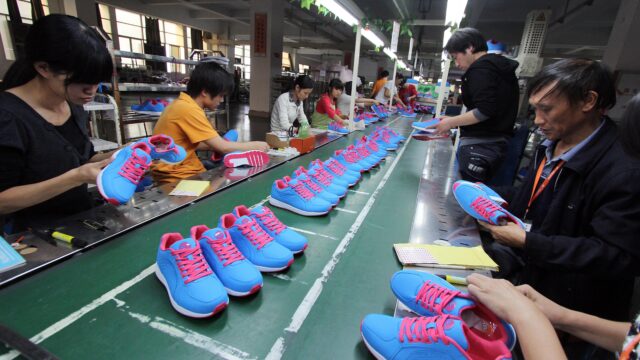
The Future of Shoe Manufacturing in the US
In an effort to bolster domestic manufacturing, Keen, a family-owned footwear brand, is set to inaugurate a new factory just outside Louisville, Kentucky. This venture embodies the “America First” economic ideology popularized during the Trump administration—a beacon of hope for a revival in American manufacturing that has often been elusive. However, a closer look reveals a more complex narrative regarding the contemporary state of manufacturing in the United States.
Automation at the Forefront
With a modest staff of only 24 workers, Keen’s factory heavily integrates automation technology. Advanced robots are employed to fuse shoe soles and assemble materials, signifying a shift in manufacturing practices. This evolution has transformed the production landscape into a capital-intensive, technologically driven enterprise rather than a labor-heavy operation.
Hari Perumal, the COO of Keen, addresses the challenges posed by high labor costs in the U.S., stating, “The labor rates here in the US are very expensive.” He notes that compared to Asian factories, American labor expenses can be 10 to 12 times higher. This reality propelled Keen to start local production in 2010 in response to rising costs in China, creating a buffer against current tariffs imposed on imports.
Reshoring: A Complicated Landscape
Despite its innovative strategies, Keen only assembles about 9% of its shoes on American soil. The complexities of reshoring production are evident—many industries, including major brands like Nike and Adidas, have previously attempted similar initiatives with limited success. Keen’s reliance on automation enables a fraction of the workforce compared to traditional overseas production.
Mr. Perumal emphasizes the efficiency of domestic production, stating, “We are making products here in the USA very economically and very efficiently.” The shift to automation has been paired with careful design and material selection to optimize production processes.
A Shrinking Domestic Footwear Industry
The decline of American manufacturing is stark; post-World War II, the industry thrived, producing not just footwear but also vehicles and appliances. As globalization accelerated in the late 20th century, manufacturing shifted abroad to exploit cheaper labor and less stringent regulations. This trend has left the American industrial heartland hollow, fostering ongoing political and economic disputes.
Currently, less than 1% of footwear sold in the U.S. is made domestically, with the vast majority—approximately 99%—imported from countries like China, Vietnam, and Indonesia. Pepper Harward, CEO of Oka Brands, which also produces shoes in the U.S., remarks on the difficulties in establishing a self-sustained manufacturing ecosystem. He noted that sourcing materials domestically is a persistent challenge.
Looking Ahead: Challenges and Innovations
For Keen and Oka, investing in local manufacturing necessitates a blend of patience and innovation. Mr. Harward observes a growing interest in manufacturing locally, partly due to recent tariffs and disruptions from the pandemic. However, he remains cautious, suggesting that substantial changes would take time. “It would probably take 10 years of pretty high tariffs to give people incentives to do it,” he adds.
Despite these obstacles, Keen’s longstanding plans are materializing, a testament to the enduring capacities of family-owned businesses to invest in long-term visions rather than quarterly outcomes. “We are a private, values-led company,” Mr. Perumal notes, emphasizing the unique position they hold in the industry.
In essence, while Keen’s new factory may not mark a return to the industrial past, it does offer a glimpse into the future of American manufacturing—one where automated technologies merge with traditional craftsmanship.
| Aspect | Details |
|---|---|
| Employees in Keen’s Kentucky Factory | 24 |
| Percentage of Shoes Assembled in the US | 9% |
| Labor Cost Comparison | 10-12 times higher in the US than in Asia |
| Percentage of Footwear Imported in the US | 99% |













